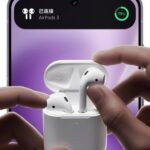
According to the research report, released on Thursday from the International Data Group (IDC), the total number of smartphones exported in China increased by 3.3% in the first quarter of this year. However, the amount of factory iPhone decreased significantly, up to 9% compared to the same period last year.
Notably, according to IDC, Apple is the only large smartphone manufacturer that lost market share in this quarter.
Domestic rivals have dominated in the Chinese market – the area where CEO Tim Cook once called “the most competitive market in the world”. This growth is motivated by government allowances, including smartphones.
IDC’s analyst Will Wong said that the high price of the iPhone caused Apple to be mostly excluded from the wave of growth thanks to subsidies.
“The amount of Apple smartphone factory decline due to high -end pricing policies makes them unable to take advantage of subsidies,” Wong wrote in IDC reports. iPhone accounts for 9.8 million units, equivalent to 13.7% of the total 71.6 million smartphones shipped in China in the first quarter of the year.
In contrast, Xiaomi’s domestic rival has regained its first position for the first time in nearly a decade, with an impressive growth of 39.9%, reaching 13.3 million units.
In January, the Chinese government expanded its allowances to stimulate consumption spending, applicable to both smartphones and other technology devices. However, this benefit is only for products priced at less than 6,000 yuan (about 821 USD), making some iPhone models too expensive to get 15% subsidy under the program.
For example, iPhone 16 Pro has a starting price of 7,999 yuan (equivalent to US $ 1,095). Meanwhile, domestic manufacturers such as Xiaomi and Huawei have many cheaper phones, eligible for allowances.
Government allowances are not the only challenges that Apple is facing in China. The 145% tariff imposed by President Donald Trump on Chinese goods is still a potential threat – although Apple’s device is temporarily exempted from this high tax. China is currently Apple’s largest supply chain center for iPhone. Although Mr. Trump has given priority to reducing the tax burden on the technology industry, he also stated that companies like Apple will suffer a separate tax rate in the future.
“In the coming time, the market is expected to face many challenges when the US -China trade tensions can increase the cost and tightening consumption budget,” said Arthur Guo – a high -class analyst at IDC.
Apple still has a long way to regain its position in the Chinese market, as the numbers show that the iPhone is gradually losing its foothold. Apple smartphone market share in China in the fourth quarter of 2024 was only 17% – down 21% compared to the same period last year.
Apple will publish the first quarter financial statements on May 1, and this will help investors in Wall Street have a better view of the business situation of the “giant” of technology in this fierce competitive market.
According to: Bi


















